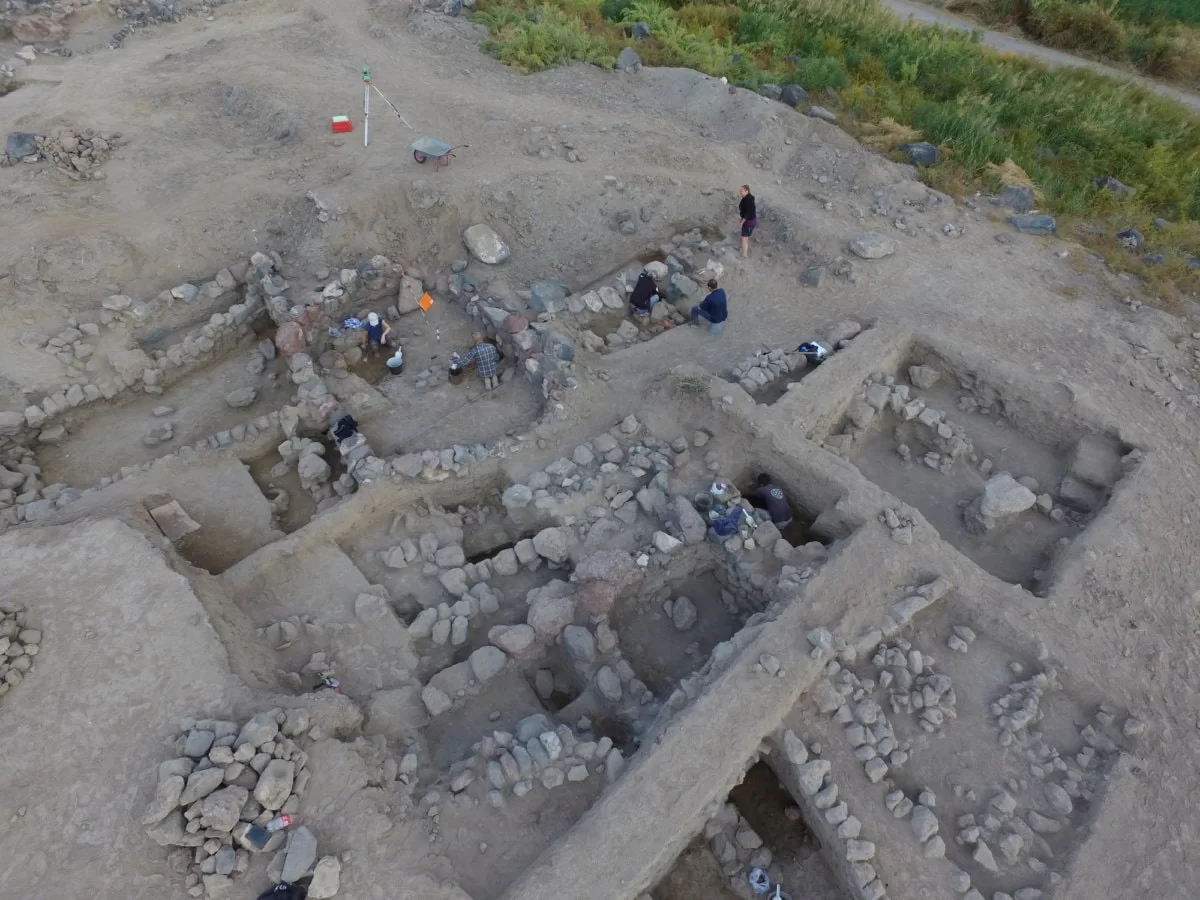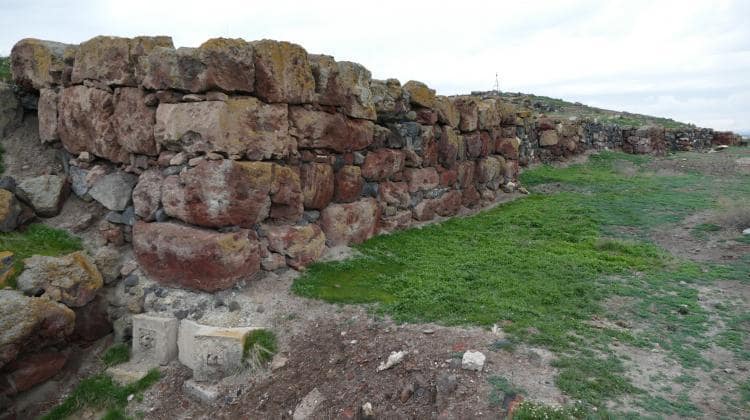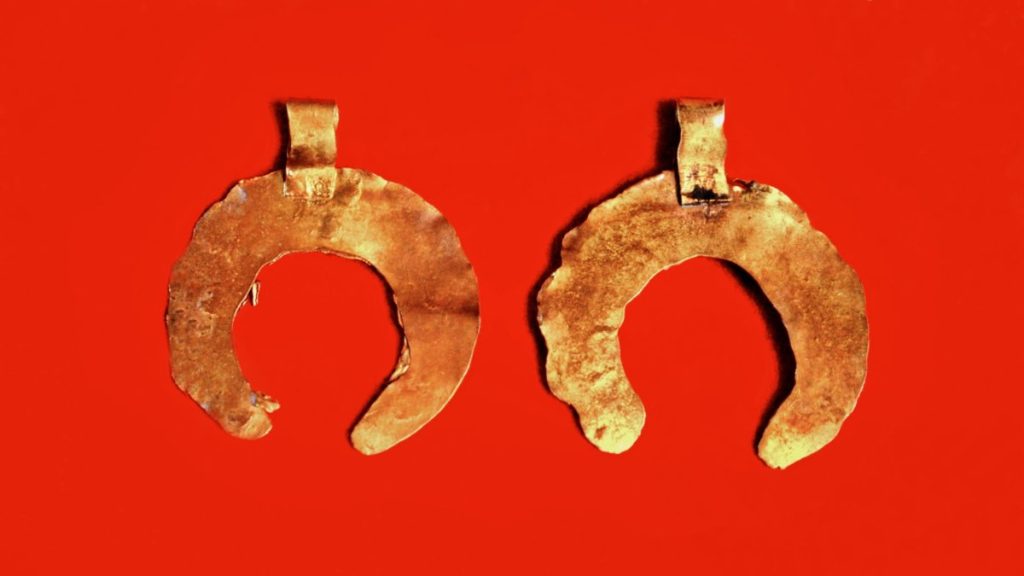A team of archaeologists made up of Polish and Armenian scientists has discovered a “golden tomb” containing two skeletons in Metsamor, Armenia.

The team discovered the remains of three gold necklaces while excavating the grave of two people, most likely a couple (a man and a woman). The tomb dates back to Ramesses II’s rule over Egypt.
Metsamor is one of the most studied archaeological monuments of V-I century BC in the Armenian Highland, and throughout the Ancient Near East. It includes the Bronze-Iron Age settlement (citadel, city districts, and celestial observation platform) as well as the cemetery. The land area exceeds 200 hectares. The site is located in the Ararat plain, about 35 kilometers west of Yerevan, in the Taronik administrative district.
The ancient site of Metsamor is the place where the oldest known gold jewelry in the territory of Armenia was found.
Discovery was a cist grave, meaning that the two skeletons were found in chambers dug in the ground and lined with large stones. Researchers also found the remains of a wooden burial bed.

Metsamor. View of the citadel. Photo: Szymon Zdziebłowski
“Their death is a mystery to us, we do not know the cause, but everything indicates that they died at the same time, because there are no traces of tomb reopening,” said the head of the research project, Professor Krzysztof Jakubiak from the Faculty of Archaeology of the University of Warsaw.
The bones, according to archaeologists, were well preserved. Both skeletons had slightly crouched legs. According to preliminary estimates, the couple died between the ages of 30 and 40.
Professor Krzysztof Jakubiak believes that this is a unique find because the very richly equipped grave has not been robbed.
Archaeologists discovered over a hundred beads and gold pendants inside the tomb. Some of them look like Celtic crosses. There were also a large number of carnelian pendants.
“All these elements probably made up three necklaces,” said Professor Jakubiak.

The ancient site of Metsamor is the place where the oldest known gold jewelry in the territory of Armenia was found. Photo: Service ForThe Protection Of Historical Environment and Cultural Museum-reservations
A dozen or so complete ceramic vessels and a unique faience flask were also found in the grave. The flask had not been made in the area. It was brought from the Syrian-Mesopotamian borderland, according to the researchers.
Archaeologists do not know who lived in Metsamor at that time (in the second half of the 2nd millennium BCE). The people who inhabited the large, fortified settlement there were not literate, so they left no texts. This makes identifying them difficult for scientists.
Jakubiak said: “But it was a very large settlement. Even fortifications made of huge stone blocks have survived to our times, encircling the so-called citadel on the hill. At the end of the 2nd millennium BCE, there was no other settlement in the region that could be compared in terms of importance and size.”
Source: arkeonews.net








